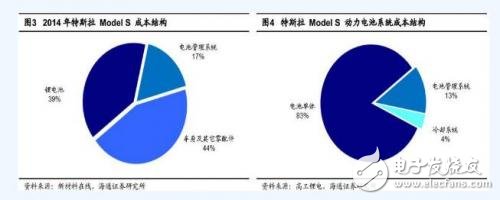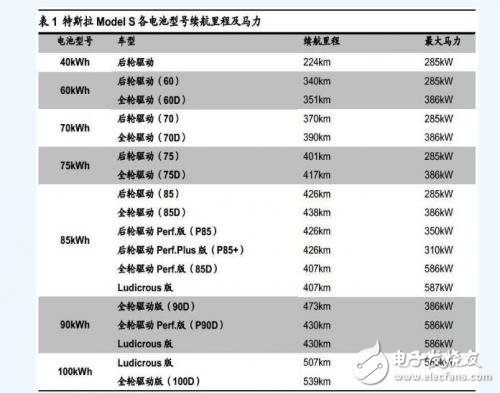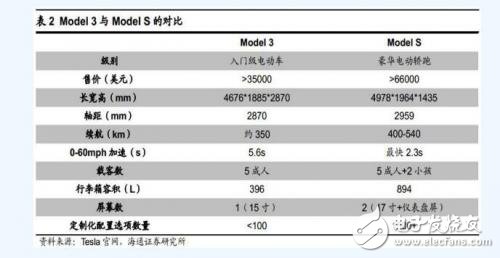Accurately estimate the state of charge (SOC) of the power battery pack, that is, the remaining battery power, ensure that the SOC is maintained within a reasonable range, and prevent damage to the battery due to over-charging or over-discharging. How much energy is left in the vehicle energy storage battery or the state of charge of the energy storage battery.
Dynamically monitor the working status of the power battery pack:During the charging and discharging process of the battery, the terminal voltage and temperature, the charging and discharging current, and the total voltage of the battery pack of each battery in the battery pack of the electric vehicle (which should be a power battery pack) are collected in real time to prevent the battery from overcharging or overdischarging. . At the same time, the status of the battery can be given in a timely manner, and the problematic battery is selected to maintain the reliability and high efficiency of the operation of the entire battery, making it possible to realize the remaining battery estimation model. In addition to this, we also need to establish a usage history file for each battery to provide information for the further optimization and development of new types of electricity, chargers, motors, etc., to provide the basis for offline analysis system failure.
Balance between battery cells and battery packs:
That is, equalization is performed between the cells and the battery pack so that each battery in the battery pack reaches a state of equilibrium. Battery balance is generally divided into active equalization and passive equalization. Most of the BMS that have been put on the market are passively balanced. Balanced technology is the key technology for a battery energy management system that the world is currently researching and developing.
Battery Management System Development StatusElectric vehicles will use lithium batteries as the main driving force in the future. The main reason is that lithium batteries have the advantage of high energy density, so the performance is relatively stable. However, when lithium batteries are mass-produced, the quality is not easy to grasp, and there is a slight difference in the battery power at the time of delivery. With the operating environment, aging and other factors, the inconsistency between the batteries will become more obvious, and the battery efficiency and life will also be deteriorated. With overcharging or overdischarging, it may lead to safety issues such as burning and burning. Therefore, through battery management system (BMS) can accurately measure the use of the battery pack, protect the battery will not be overcharged, balance each battery in the battery pack, and analyze and calculate the battery pack and convert it into driving Understand the endurance information to ensure that the power battery operates safely.
In 2012, the global battery management system (BMS) market output grew by more than 10%, and the growth rate from 2013 to 2015 will jump dramatically to 25-35%. At this stage, whether vehicle manufacturers, battery factories, or related automotive and electrical component plants have all invested in battery management system (BMS) research and development, in order to grasp the key technologies of the electric vehicle industry, as depots are users of battery management systems, and many vehicle manufacturers are The preference is to use its own software processing and to control it with special factory regulations in order to maintain operational flexibility. The development of the battery management system (BMS) industry may be similar to that of lithium batteries. The depot will develop key technologies in close cooperation with long-term suppliers, making it difficult to enter new vendors. Therefore, in the future, newcomers will want to enter into the supply chain of the depot, and in addition to strengthening the cooperative relationship with the relevant supply chain, they will have the opportunity to gain the initiative by tailoring customized solutions to their needs.
Tesla's battery systemThe battery system is the source of power for electric vehicles and is the core system component of the entire industry chain. Taking Tesla ModelS as an example, the cost of the battery system (lithium battery + battery management system) is 56%, while that of the traditional sedan engine is only about 15%-25%. By 2016, the cost ratio of the battery system has decreased, and the cost structure has also changed. The cost of single cells accounts for 83%, the cost of the battery management system accounts for about 13%, and the remaining 4% is the battery cooling system. . Through detailed sizing of Tesla's battery system and Tesla's complementary charging facilities, we can have an intuitive and in-depth understanding of Tesla's battery industry chain, which can also be used for other new energy vehicles. effect. Currently, the cost of the battery system is one of the most important factors restricting the development of Tesla and other new energy vehicles. Understanding the battery system is equivalent to having the key to understanding the new energy automotive industry.
Through detailed sizing of Tesla's battery system and Tesla's complementary charging facilities, we can have an intuitive and in-depth understanding of Tesla's battery industry chain, which can also be used for other new energy vehicles. effect. Currently, the cost of the battery system is one of the most important factors restricting the development of Tesla and other new energy vehicles. Understanding the battery system is equivalent to having the key to understanding the new energy automotive industry.

In order to be practical, an electric vehicle must consider its endurance after a single charge and the convenience of its charging. To understand these two points, it is necessary to pay attention to the construction of the battery and the charging speed and equipment distribution of the charging equipment. ModelS has introduced 40, 60, 70, 75, 85, 90, and 100 kWh with a battery power model. For models of 85 kWh and above, there are also performance versions available for better dynamic performance, such as the Perf version and Ludicrous. Version. With different models, the maximum travel distance and maximum horsepower vary depending on the full charge. With the advancement of technology and in order to better meet people's needs, Tesla has canceled some ModelS battery models one after another. The power models that can still be ordered today are 75, 90, and 100kWh.

ModelX has introduced models of 60, 70, 75, 90, and 100 kWh, but now only 70 and 100 kWh models can be ordered. According to Zhongguancun Online, Tesla's basic version of the Model 3 electric vehicle has a power of about 60 kWh. However, according to Musk's Twitter and related information, Gen Leifeng has speculated that it may only have a maximum of 75kWh. This is mainly due to the fact that Model3 has a smaller wheelbase than ModelS and ModelX, and Model3 is also used as an entry point. According to Elon Musk's Twitter news on July 9th, the first Model3 was released on the same day, and Tesla will deliver the delivery ceremony for the first batch of 30 consumers who ordered Model3 on July 28. In addition, Model 3 uses batteries that are also different from ModelS and ModelX. At the media briefing held on July 15, 2015 by Tesla Motors Japan, Kurt Kelty, the head of battery technology at U.S. headquarters, announced that the Model 3 will use the new 21700 lithium battery. The energy density will be higher than that for ModelS and ModelX. The 18650 lithium battery is 30% higher.

Unlike other electric vehicles, Tesla's battery is not a dedicated one-piece battery, but instead assembles several thousand cylindrical small batteries. Both ModelS and ModelX currently use Panasonic's 18650NCA special batteries, which are 18mm in diameter and 65mm high. The conventional 18650 lithium battery is widely used in the cell of a notebook computer and its chemical formula is LiNiCoAlO2.

The advantage of using a single battery is that a single 18650 battery has a limited explosive power. Even if one battery unit in parallel fails, the cruising distance is shortened by the distance traveled by one battery unit. And the battery technology is mature, suitable for mass production. At the same time, the battery has good consistency and low cost.
Thanks to the excellent thermal management system of Tesla's electric vehicle itself, Panasonic's 18650 battery made of Tesla has been able to remove some of the extra safety facilities compared to the conventional one, thus becoming lighter and cheaper. At the same time, Tesla installed fuses on each cell, instead of normally setting the fuses in the entire battery pack.
Since the power system uses a small single cell battery, Tesla's battery system configuration is extremely complicated and delicate. Taking the ModelS85kWh model as an example, the battery panel is divided into 16 battery packs. Each of the rectangular blocks shown in the figure below is a battery pack, and the rightmost stack is two sets.
The battery packs are connected in series with a total voltage of 402 volts. Tesla's battery packs are each made up of 6 cells in series. Each battery pack is made of 74 cells of 18650 cells in parallel. In order to facilitate the placement of the heat-dissipation circuit in the battery pack, the single-cell battery pack is arranged in an irregular manner.
Therefore, ModelS85kWh model uses up to 7104 batteries, according to 3.6V operating voltage and 3.2Ah capacity calculation, the total power of about 82kWh, slightly lower than the model description of the amount of electricity. The 7,000-cell battery pack weighs nearly 700 kilograms, accounting for nearly half the weight of the entire vehicle. Similarly, the 100kWh model uses a total of 8256 single cells and is also divided into 16 cells.

The KSPOWER brand constant voltage led driver provides L series with 4 functions optional: 5 in 1 dimmable(0-10V/1-10V/Triac/PWM/resistor), non dimmable, triac/phase-cut dimmable, 4 in 1 dimmable(0-10V/1-10V/resistance and PWM signal) constant voltage LED Drivers; N series phase dimmable LED driver; E series junction box LED driver and P series LED Driver. The constant voltage driver is IP65 IP67 NEMA 3R IP20 rated environment protection for indoor and outdoor LED lighting, with or without junction box for easy installation. The led grow light driver is Class 2 Class P rated and high built-in PFC function, offers 5 years after-sale warranty and both ETL/cETL, UL/cUL, FCC CE ENEC GS RoHS Listed and SELV style enclosures. The led electronic driver transformers offers outstanding led dimming and power performance, flicker free and protections for short circuit, over load, over voltage and over temperature. The P series LED driver compact small plastic unit size for built-in LEDs.
Power Led Drivers,Led Ac Driver,landscaping transformer,led electronic driver,led grow light driver
Shenzhenshi Zhenhuan Electronic Co., Ltd , https://www.szzhpower.com
